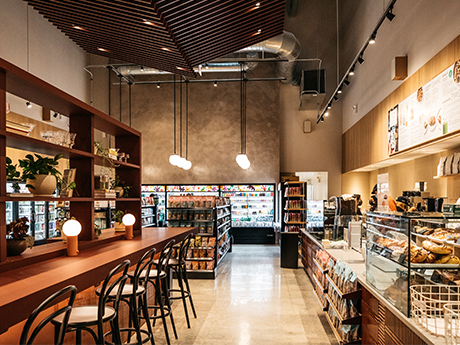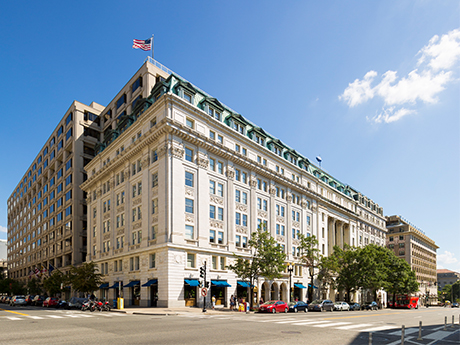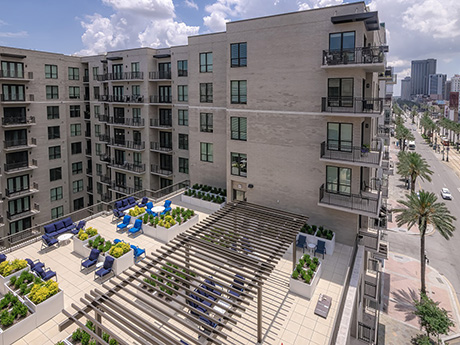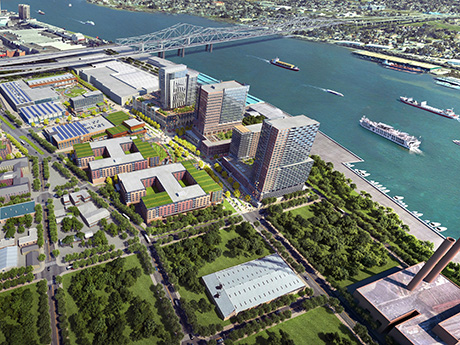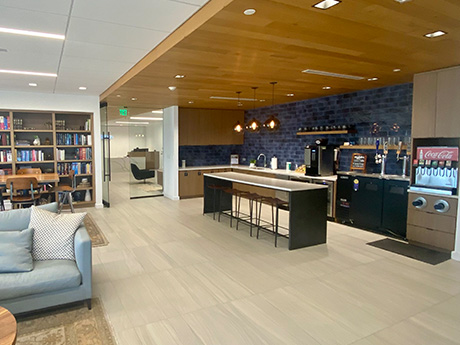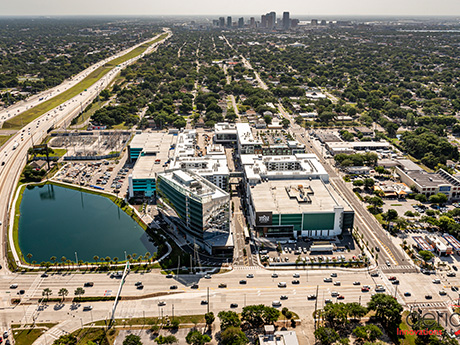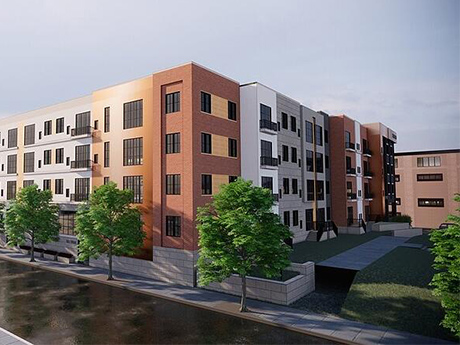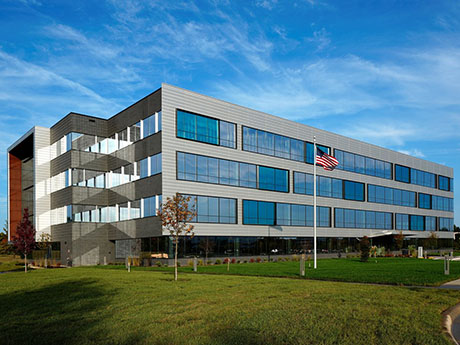Sustained leasing velocity for industrial/warehouse space in the Northern Virginia market, combined with the nearly insatiable demand for data center product, is contributing to developers repurposing existing business communities with this asset class to support demand, as well as companies expanding their geographic footprints into suburban Maryland and Central Virginia to secure space. This trend could be pivoting slightly due to the recent slowdown in leasing activity both locally and nationally as it relates to rising interest rates, the prospects for a looming recession and the possible end of a prolonged real estate cycle. The vacancy rate for industrial/warehouse space in the region currently stands at just over 2 percent. In the last quarter, the Northern Virginia industrial market experienced the largest pipeline in its history with more than 1 million square feet of space delivered, with nearly 5 million square feet of space in the development pipeline. The largest projects are contained within Stafford County as land in Loudoun and Fairfax counties has become unaffordable, or simply unattainable. Triple-net asking rents reached another all-time high of $12.45 per square foot in the third quarter, aided in part by these new deliveries. New space remains scarce and commands a premium, …
Southeast Market Reports
So much has been made about the future of retail in the United States. Is it dead? Is it back? How has it evolved? No doubt, retail was the sector most affected by the COVID-19 pandemic, and that is also true here in Washington, D.C. If you look at regional data, it appears to be rebounding nicely. The overall market currently boasts a near record-low vacancy rate at just 5.1 percent, according to CoStar Group. Tighter market conditions have helped landlords restore pricing power throughout the District, and asking rents and rent growth have surpassed pre-pandemic highs. When we measure by net absorption, retail demand in the region in 2022 is on pace to reach its highest level since 2016. But numbers don’t tell the whole story as the retail sector’s recovery in D.C.’s downtown market post COVID differs greatly from all of the metropolitan area’s other submarkets in a scenario that can only be described as a tale of two markets. Downtown D.C. So, what’s driving downtown retail these days? Simply, it’s the office market. Retail’s post-pandemic recovery is almost entirely dependent on office workers, and there is no more significant factor at play for its success than corporation’s …
Downtown Washington, D.C., is confronting many of the same pandemic-generated challenges as other urban markets across the United States. This includes above-average and record high commercial vacancy (office and retail), as well as lower-than-average daytime foot traffic, in part due to an increase in hybrid work. Yet there is a case to be made that now is a unique moment for leasing office (and retail) space in the District’s central business district (CBD). The loss of foot traffic has hit downtown retail particularly hard, especially fast-casual dining. Coffee shops and sandwich places that depend on office workers have closed at a higher rate than other food-related retail. But the pedestrians are coming back. Kastle Systems’ data from the DowntownDC Business Improvement District (BID) shows an increase since Labor Day in the number of workers at their desks, with approximately 42 percent of the pre-pandemic number of employees in-office on a weekly basis, compared with around 33 percent last spring. This is expected to rise as more employers establish return-to-office policies. Despite 2022’s turbulent economy over the first six months, D.C.’s office leasing activity was up 16 percent compared with the first half of 2021, according to Cushman & Wakefield. The …
Increased interest rates and challenging insurance costs would normally stifle a multifamily market. However, an inventory constrained by a lack of land, supply chain issues, labor shortages and the increased cost of homeownership have contributed to a further stabilization of the metro New Orleans multifamily market. The overall vacancy factor for our seven primary submarkets that make up metro New Orleans are in the 5 to 6 percent range. We anticipate occupancy rates to steadily increase going forward as new construction has stalled and rising interest rates have delayed many tenants from transitioning to homeownership. Overall rental rates in the metro average in the $1,250 to $1,350 per month range. The rents represent a 3.5 percent increase over the past 12 months. It should be noted that some submarkets have seen considerably higher increases. The highest rental rates reported in the metro for garden-style communities are in Eastern St. Tammany Parish, where the newest inventory exists. The highest rents in New Orleans are downtown in the CBD/Warehouse District. These communities comprise mid-rise and high-rise developments and command rents exceeding $2.50 per square foot. The downtown market experienced some softness during the COVID-19 pandemic but made a robust recovery once restrictions …
New Orleans has seen significant, pent-up retail growth over the past 12 months as we emerge from the COVID-19 pandemic. More recently, however, external forces have provided some headwinds and caused tenants and investors to go back to their corners to reassess. Inflation, rising interest rates, insurance premium increases and elevated construction costs have all contributed to uncertainty in the Greater New Orleans retail landscape. Within the French Quarter and CBD, growing concerns from crime have forced some CEOs to look outside of the city core for their office headquarters. This issue, coupled with the current “work-from-home” environment, causes downtown retailers to rely even more on tourism and convention business. Thankfully, the hospitality sector has had success and is now exceeding pre-pandemic levels. Due to an active 2021 hurricane season that saw Hurricane Ida devastate South Louisiana, insurance rates have skyrocketed as carriers continue to leave the state. As a result, landlords have struggled with how to handle these unforeseen spikes in expenses. Should they pass those on to the tenant or eat them to remain competitive, or a combination of the two? 2022 has been a surprisingly quiet storm season, so with any luck these rates should begin to …
In the post-pandemic environment where employers are trying to navigate new work schedules, office tenants are focusing more on the finish and design of office space than they are the rents. In New Orleans, we are seeing office tenants rethink the concept of office space altogether, and their employees are thinking differently about their individual offices as well. There has been a shift from the traditional office space of years past where one spends eight hours a day in a large private office with the door closed. The office has evolved into more of a social place. Companies want their employees to come back to the office and not to be fully remote. Many employees want to get out of their pajamas and come back to the office. But, getting them all to come back has proven to be the challenge. Companies are now enticing their employees with redesigned spaces that are more aesthetically pleasing and rich with amenities that allow for more social interactions and collaboration. Employees who work remotely a few days a week are coming to the office because they want that engagement with their colleagues. Tenants are now less interested in refurbishing private offices and spend …
Atlanta’s prowess within the Sun Belt as the dominant multifamily market did not happen by accident, nor did it occur overnight. Back in the 2000s, Atlanta was still an emerging market that was working to attract new employers while battling a season of oversupply that hampered rent growth across the city’s numerous submarkets. Now, and since the mid-2010s, Atlanta has defined itself as the premier entry point for investors looking to break into the Sun Belt, and its proven track record ensures it will continue serving as a global magnet for relocation, investment and expansion. Atlanta’s diversified economy has attracted some of the nation’s biggest and best names in just a few years’ time. While Silicon Valley has captured the tech world’s eye for decades, global powerhouses such as Microsoft, Google and Meta (Facebook) have started planting their flags in Atlanta with reported goals of adding tens of thousands of highly paid employees by 2030. Tech companies are capitalizing on a strategic opportunity in Atlanta to broaden their workforce in a market that boasts a highly educated and diverse population while providing an attractive cost of living. With respect to Atlanta’s employment growth, the presence of Georgia Tech cannot go …
What was once a vacant landscape has undergone a modern-day renaissance, transforming into a thriving, energetic hub infused with dynamic retail, local chef-driven eateries and desirable living and working environments. Tampa has evolved into a top “a place to see” and “place to be” for both out-of-state guests and residents alike. What is one the main driving forces behind this urban revitalization? The rise of high-density mixed-use developments and lifestyle centers that create central spaces for people to live, work, play, shop, dine and explore new experiences. Recently, Florida has benefited from a massive influx of residents and development activity as a result of the COVID-19 pandemic. Varying demographics and age groups flocked to the Sunshine State in search of more space, agreeable weather and an expedient reopening as far as retail, restaurant and entertainment. Along with the mass of new residents, Tampa quickly rose to become the second most popular city in the country for prospective homebuyers, reflecting a new interest to settle down in the area. The retail sector also boomed state-wide, but specifically in Tampa, with retail rents growing 7.8 percent over the last 12 months and ranking among the top 10 fastest growing markets, according to …
Following the trends of both regional and national multifamily statistics, the Louisville metro area has had a robust stretch of development, repositioning and innovation in the multifamily housing sector that has surpassed 10 years in duration. With a population of 1.32 million, there are 516,000 households in Louisville with an average household income of $69,000. Pursuant to a recent CoStar Group report, Louisville has a total inventory of just over 84,000 units. It is anticipated that there will be over 91,000 units by 2026, a 8.3 percent increase. CoStar also forecasts that the Derby City’s vacancy rate will hover around 5.5 percent in 2026. One of the projects under development includes The Reserve (the Stable) at English Station. The 172-unit, Class A community adjoins a patio home development that was developed by Sunshine Industries. The property is slated for completion in January 2023. As far as popular neighborhoods for development, there are several recently developed or under construction projects in the city’s East End district. The city’s economy has benefited from the accelerated adoption of e-commerce as a result of the pandemic. Retailers and logistics providers are leasing a record amount of space as they seek to expand their distribution …
Remote Work Prompts Flight to Quality, High Urban Vacancies for Louisville Office Market
by John Nelson
The Louisville office market is taking diverse paths forward following the pandemic. The suburban Class A market is thriving with new construction, rental rate growth and resiliency in the face of downsizing tenants and negative absorption. A flight to quality among tenants has benefited local developers such as NTS Development, which has been constructing first-class, next-generation buildings at ShelbyHurst Office Campus since 2012. NTS recently completed its fifth speculative office building at the project, 425 North Whittington, a four-story, 130,000-square-foot building that is 60 percent leased with strong leasing activity. The flight to quality is driving tenants to choose higher-quality buildings with more expensive rental rates to help attract and retain talent and cater to a hybrid workforce. Traditional downtown occupiers are also considering the suburbs for the first time to create a workplace that draws employees back to the office. Suburban vacancy rates have increased since the end of 2019, with the Class A rate increasing by 490 basis points to 13.5 percent and the Class B vacancy rate increasing by 440 basis points to 15.2 percent as of second-quarter 2022. The average asking rental rate for Class A suburban space rose during this period despite increased vacancy rates. …



